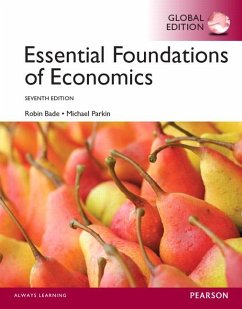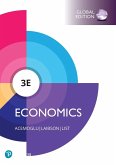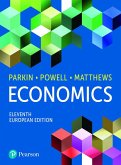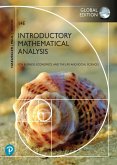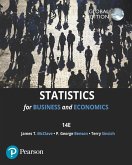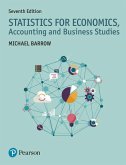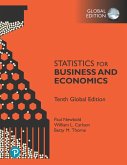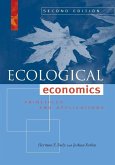For one-semester Principles of Economics courses.
A practice-oriented learning system that breaks the traditional textbook mold
To help students focus on the most important concepts–and effectively practice application of those concepts–Essential Foundations of Economics is structured around a Checklist/Checkpoint system. The result is a patient, confidence-building program that prepares students to use economics in their everyday lives, regardless of what their future career will be.
This program provides a better teaching and learning experience–for you and your students. It will help you to:
• Personalize learning with MyEconLab: This online homework, tutorial, and assessment program engages students in learning and provides instructors tools to keep students on track.
• Encourage students to learn by doing: A Checklist/Checkpoint system provides a practice-oriented framework that enables active learning.
• Command student attention and foster interest in the course: Engaging features draw students into the material, and keep them focused throughout the course.
• Provide engaging, fully updated content: New and updated material on contemporary topics better motivates students to discover the economic way of thinking.
Features + Benefits
Encourage students to learn by doing
Essential Foundations of Economics is structured to encourage learning by doing. Its Checklist/Checkpoint system provides a practice-oriented framework, consisting of the following elements:
• Checklists at the beginning of each chapter preview the 3—5 key ideas students need to know. Each chapter is broken into discrete sections devoted to one of these ideas.
• Checkpoints at the end of each section present a practice problem with a guided solution and a parallel exercise for the student to try.
• Chapter Checkpoints at the conclusion of each chapter include a summary of key points and key terms, and additional practice opportunities such as problems, news analysis questions, critical thinking questions, and online exercises.
End-of-chapter features prompt students to apply what they’re learning.
• News-based end-of-chapter questions provide news summaries and prompt students to apply economics to issues in the news.
• Web exercises prompt students to seek out real data on the web and use it to answer questions.
The program’s supplements are reliable and easy to use because they align with the same Checklist/Checkpoint structure found in the text. A complete suite of instructor supplements is available, including an Instructor’s Manual, a Solutions Manual, three Test Banks, PowerPoint® lecture slides, and an Instructor’s Resource CD-ROM.
• Test Bank questions include graphing questions and integrative questions in each chapter. The Test Bank authors also wrote questions for the Study Guide to ensure consistency.
• All components of the supplements are organized by Checkpoint topic so students can move easily through the textbook, MyEconLab, and the Study Guide, and instructors can navigate among the textbook, MyEconLab, the PowerPoint lecture slides, the Instructor’s Manual, and the Test Banks.
• Three separate Test Banks are available, with more than 12,000 multiple-choice, numerical, fill-in-the-blank, short-answer, and essay questions, plus integrative questions that build on material from more than one Checkpoint and more than one chapter.
Command student attention and foster interest in the course
Modern micro and macro topics are presented accessibly, with contemporary examples that help students tie theory to real-world situations.
Simplified chapter openers grab student attention and provide instant focus for the chapter. Each chapter opens with a question about a central issue that the chapter addresses which is illustrated with an engaging photograph.
Eye On boxes address and discuss the chapter-opener and an end-of-chapter problem, enabling students to grasp the point of the chapter quickly and helping instructors to focus on a core issue both in class and in practice exercises. This feature is also available in the MyEconLab Homework and Test Manager, making it available for assignment with automatic grading.
I. Introduction
1. Getting Started
2. The U.S. and Global Economies
3. The Economic Problem
4. Demand and Supply
II. A Closer Look at Markets
5. Elasticities of Demand and Supply
6. Efficiency and Fairness of Markets
7. Government Actions in Markets
8. Global Markets in Action
9. Externalities: Pollution, Education, and Health Care
III. Prices, Profits, and Industry Performance
10. Production and Cost
11. Perfect Competition
12. Monopoly
13. Monopolistic Competition and Oligopoly
IV. Monitoring the Macroeconomy
14. GDP: A Measure of Total Production and Income
15. Jobs and Unemployment
16. The CPI and the Cost of Living
V. Understanding the Macroeconomy
17. Potential GDP and Economic Growth
18. Money and the Monetary System
19. Aggregate Supply and Aggregate Demand
20. Fiscal Policy and Monetary Policy
For one-semester Principles of Economics courses. A practice-oriented learning system that breaks the traditional textbook mold To help students focus on the most important concepts?and effectively practice application of those concepts?Essential Foundations of Economics is structured around a Checklist/Checkpoint system. The result is a patient, confidence-building program that prepares students to use economics in their everyday lives, regardless of what their future career will be. This program provides a better teaching and learning experience?for you and your students. It will help you to: • Personalize learning with MyEconLab: This online homework, tutorial, and assessment program engages students in learning and provides instructors tools to keep students on track. • Encourage students to learn by doing: A Checklist/Checkpoint system provides a practice-oriented framework that enables active learning. • Command student attention and foster interest in the course: Engaging features draw students into the material, and keep them focused throughout the course. • Provide engaging, fully updated content: New and updated material on contemporary topics better motivates students to discover the economic way of thinking.
Hinweis: Dieser Artikel kann nur an eine deutsche Lieferadresse ausgeliefert werden.
A practice-oriented learning system that breaks the traditional textbook mold
To help students focus on the most important concepts–and effectively practice application of those concepts–Essential Foundations of Economics is structured around a Checklist/Checkpoint system. The result is a patient, confidence-building program that prepares students to use economics in their everyday lives, regardless of what their future career will be.
This program provides a better teaching and learning experience–for you and your students. It will help you to:
• Personalize learning with MyEconLab: This online homework, tutorial, and assessment program engages students in learning and provides instructors tools to keep students on track.
• Encourage students to learn by doing: A Checklist/Checkpoint system provides a practice-oriented framework that enables active learning.
• Command student attention and foster interest in the course: Engaging features draw students into the material, and keep them focused throughout the course.
• Provide engaging, fully updated content: New and updated material on contemporary topics better motivates students to discover the economic way of thinking.
Features + Benefits
Encourage students to learn by doing
Essential Foundations of Economics is structured to encourage learning by doing. Its Checklist/Checkpoint system provides a practice-oriented framework, consisting of the following elements:
• Checklists at the beginning of each chapter preview the 3—5 key ideas students need to know. Each chapter is broken into discrete sections devoted to one of these ideas.
• Checkpoints at the end of each section present a practice problem with a guided solution and a parallel exercise for the student to try.
• Chapter Checkpoints at the conclusion of each chapter include a summary of key points and key terms, and additional practice opportunities such as problems, news analysis questions, critical thinking questions, and online exercises.
End-of-chapter features prompt students to apply what they’re learning.
• News-based end-of-chapter questions provide news summaries and prompt students to apply economics to issues in the news.
• Web exercises prompt students to seek out real data on the web and use it to answer questions.
The program’s supplements are reliable and easy to use because they align with the same Checklist/Checkpoint structure found in the text. A complete suite of instructor supplements is available, including an Instructor’s Manual, a Solutions Manual, three Test Banks, PowerPoint® lecture slides, and an Instructor’s Resource CD-ROM.
• Test Bank questions include graphing questions and integrative questions in each chapter. The Test Bank authors also wrote questions for the Study Guide to ensure consistency.
• All components of the supplements are organized by Checkpoint topic so students can move easily through the textbook, MyEconLab, and the Study Guide, and instructors can navigate among the textbook, MyEconLab, the PowerPoint lecture slides, the Instructor’s Manual, and the Test Banks.
• Three separate Test Banks are available, with more than 12,000 multiple-choice, numerical, fill-in-the-blank, short-answer, and essay questions, plus integrative questions that build on material from more than one Checkpoint and more than one chapter.
Command student attention and foster interest in the course
Modern micro and macro topics are presented accessibly, with contemporary examples that help students tie theory to real-world situations.
Simplified chapter openers grab student attention and provide instant focus for the chapter. Each chapter opens with a question about a central issue that the chapter addresses which is illustrated with an engaging photograph.
Eye On boxes address and discuss the chapter-opener and an end-of-chapter problem, enabling students to grasp the point of the chapter quickly and helping instructors to focus on a core issue both in class and in practice exercises. This feature is also available in the MyEconLab Homework and Test Manager, making it available for assignment with automatic grading.
I. Introduction
1. Getting Started
2. The U.S. and Global Economies
3. The Economic Problem
4. Demand and Supply
II. A Closer Look at Markets
5. Elasticities of Demand and Supply
6. Efficiency and Fairness of Markets
7. Government Actions in Markets
8. Global Markets in Action
9. Externalities: Pollution, Education, and Health Care
III. Prices, Profits, and Industry Performance
10. Production and Cost
11. Perfect Competition
12. Monopoly
13. Monopolistic Competition and Oligopoly
IV. Monitoring the Macroeconomy
14. GDP: A Measure of Total Production and Income
15. Jobs and Unemployment
16. The CPI and the Cost of Living
V. Understanding the Macroeconomy
17. Potential GDP and Economic Growth
18. Money and the Monetary System
19. Aggregate Supply and Aggregate Demand
20. Fiscal Policy and Monetary Policy
For one-semester Principles of Economics courses. A practice-oriented learning system that breaks the traditional textbook mold To help students focus on the most important concepts?and effectively practice application of those concepts?Essential Foundations of Economics is structured around a Checklist/Checkpoint system. The result is a patient, confidence-building program that prepares students to use economics in their everyday lives, regardless of what their future career will be. This program provides a better teaching and learning experience?for you and your students. It will help you to: • Personalize learning with MyEconLab: This online homework, tutorial, and assessment program engages students in learning and provides instructors tools to keep students on track. • Encourage students to learn by doing: A Checklist/Checkpoint system provides a practice-oriented framework that enables active learning. • Command student attention and foster interest in the course: Engaging features draw students into the material, and keep them focused throughout the course. • Provide engaging, fully updated content: New and updated material on contemporary topics better motivates students to discover the economic way of thinking.
Hinweis: Dieser Artikel kann nur an eine deutsche Lieferadresse ausgeliefert werden.

